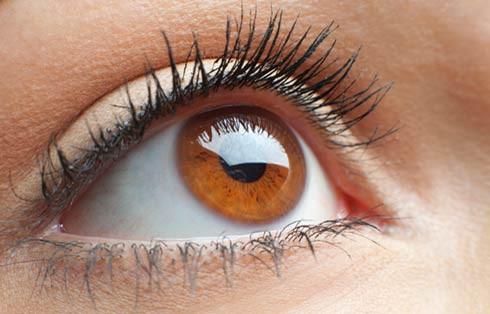With the advent of summer sunshine, many of us make sure to stock up on sunscreen and don a pair of sunglasses, but do those designer shades actually help protect our eyes? Are there other things we should be doing to keep an eye on eye health during summer?
UV exposure – What’s your risk?
Ophthalmologists (eye doctors) have long advised us to avoid too much exposure to ultraviolet (UV) light due to the increased risk of developing cataracts, eye growths, and cancer. Eye growths can arise in teenagers and in our early twenties, especially if you spend a lot of time in the strong mid-day sunshine and work near or on rivers or oceans or on snowy mountains. This increased risk is due to the reflection of light off snow, water, sand and other reflective surfaces. The amount of UV exposure can almost double in snowy conditions at the top of a mountain, and even short-term exposure can quickly lead to a painful condition called snowblindness. Anyone working or having fun in colder temperatures, such as skiers, snowboarders and snowshoers should be sure to wear protective goggles or wraparound glasses that block light from below and from the sides. People who work on the water, or who are otherwise exposed to significant amounts of reflected UV light should also take precautions. While eye growths can arise early in life, cataracts and eye cancers tend to take years to develop, with the risk accumulating every time we spend time in the sun without adequate eye protection. Some estimates suggest that a quarter to a half of our entire lifetime's UV exposure occurs before the age of 18, and as children's eyes have a clearer lens that allows more light to penetrate deep into the retina, it is easy to see why it is so important for babies and children to wear hats, sunglasses and sunscreen (Stern, 2005). Some medications, such as tetracycline, sulfa drugs, oral contraceptives, diuretics and tranquilizers, can increase sensitivity to UV light and other harmful radiation from the sun. Anyone taking these types of medications should make sure to wear eye protection year-round.
What is blue light?
We need some exposure to natural light in order to help regulate our sleep-wake cycles, but ophthalmologists increasingly recommend the use of light-filtering software on screens to minimise unnatural exposure to high-energy visible (HEV) radiation (known as blue light) after sunset. This has been shown to help support healthy sleep patterns in people who find it hard to fall asleep at night. Blue light has a longer wavelength than UV light, and penetrates deeper into the eye. While UV light tends to cause damage to the cornea and lens of the eye, blue light damages the retina and can contribute to the development of age-related macular degeneration (AMD). A
ntioxidants and eye health
Research suggests that the risk of retinal damage from this blue light (HEV) is higher in people with low blood plasma levels of vitamin C and other antioxidants. Conversely, the carotenoid pigments lutein and zeaxanthin filter harmful blue light, guarding against oxidative damage to reduce the risk of AMD (Dawczynski et al., 2013). Lutein, which can be converted by the body into zeaxanthin, is found in brightly coloured fruits and vegetables. Marigold flowers are often used to create lutein supplements as they contain around 20 times the amount of lutein found in even the richest dietary sources such as spinach. Studies have found that people with a high dietary intake (6.9-11.7mg per day) of lutein have a reduced risk of AMD and severe cataracts (Chasan-Taber et al., 1999). In a review of clinical trials, researchers found that people taking a 10 mg lutein supplement daily for a year had improvements in symptoms of AMD, including supporting improved glare recovery, near vision, and contrast sensitivity (Richer et al., 2004). Eating a healthy diet, full of fruits and vegetables, and taking appropriate precautions to minimise harmful sun exposure can help decrease the risk of eye damage.
Choosing protective eyewear
To make sure you choose a good pair of sunglasses or protective ski-goggles, look for lenses that block 100% of UV rays as well as HEV light. The frames should be wraparound-style and close-fitting, to prevent peripheral light from causing damage. While the colour of the lens doesn't matter for UV protection, lenses that afford HEV protection tend to be bronze, copper or reddish-brown.
References
Chasan-Taber, L., Willett, W.C., Seddon, J.M., et al. (1999). A prospective study of carotenoid and vitamin A intakes and risk of cataract extraction in US women. Am J Clin Nutr, 70:509-16. Dawczynski, J., Jentsch, S., Schweitzer, D., et al. (2013). Long term effects of lutein, zeaxanthin and omega-3-LCPUFAs supplementation on optical density of macular pigment in AMD patients: the LUTEGA study. Graefes Arch Clin Exp Ophthalmol, Dec;251(12):2711-23. Richer, S., Stiles, W., Statkute, L., et al. (2004). Double-masked, placebo-controlled, randomized trial of lutein and antioxidant supplementation in the intervention of atrophic age-related macular degermation: the Veterans LAST study (Lutein Antioxidant Supplement Trial). Optometry, 75:216-30. Stern, R.S. (2005). Proportion of Lifetime UV Dose Received by Age 18, What Stern et al Actually Said in 1986. Journal of Investigative Dermatology, 124(5), pp.1079–1080.


